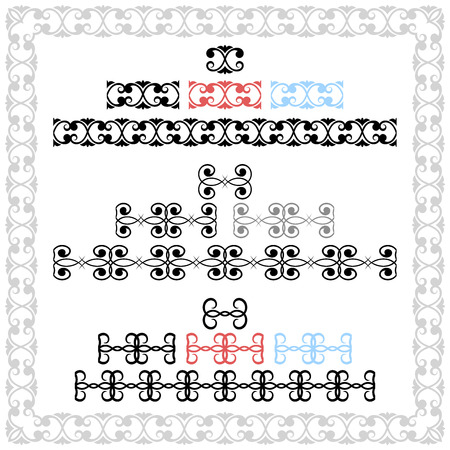1. Understanding Feng Shui and Energy Efficiency
When you think about making your American home both comfortable and energy efficient, you might not immediately think of Feng Shui. But these two ideas actually work well together! Let’s explore what they mean and how combining them can create a healthier, more harmonious living space for your family.
What Is Feng Shui?
Feng Shui is an ancient Chinese practice that focuses on arranging your surroundings to promote good energy flow, or “Chi.” It’s all about creating balance, harmony, and positive vibes in your home. This doesn’t mean filling your house with lucky charms; instead, it’s about smart layouts, thoughtful design choices, and paying attention to natural elements like light and air.
What Is Energy Efficiency?
Energy efficiency means using less energy to do the same jobs—like heating, cooling, or lighting your home. In America, this often involves things like better insulation, LED lights, energy-saving appliances, and smart thermostats. Not only does this lower your utility bills, but it’s also better for the planet.
How Do Feng Shui and Energy Efficiency Work Together?
At first glance, Feng Shui and energy efficiency may seem unrelated. But both are about maximizing comfort and well-being at home. Here’s a quick comparison:
| Feng Shui | Energy Efficiency | |
|---|---|---|
| Main Goal | Balance & Harmony | Reduce Energy Use & Save Money |
| Focus Areas | Layout, Light, Air Flow | Lighting, Insulation, Windows |
| Benefits | Positive Mood & Healthier Space | Lower Bills & Eco-Friendly Living |
| Cultural Roots | Ancient Chinese Wisdom | Modern American Living |
The Common Ground: Light, Air, and Flow
Both Feng Shui and energy efficiency care about how light moves through your space, how fresh air circulates, and how rooms are organized. For example:
- Natural Light: Feng Shui loves sunlight for good energy—and natural light also helps save electricity!
- Windows: Placing windows in the right spots boosts both airflow (good Chi) and ventilation (less need for air conditioning).
- Sensible Layouts: Arranging furniture to let energy (and people!) move easily makes spaces feel bigger and reduces clutter—which can even help with heating/cooling efficiency.
Why Integrate Both in Your Home?
If you combine these two approaches in your American home, you get the best of both worlds: a place that feels welcoming and peaceful while being cost-effective and environmentally friendly. By understanding the basics of each, you’re one step closer to a living environment that supports both your well-being and your wallet.
2. Optimizing Natural Light: Windows with Purpose
Bringing In Positive Energy with Window Placement
In both Feng Shui and energy-efficient home design, windows play a key role in shaping the atmosphere of your living space. The way you position your windows can invite vibrant, uplifting Chi (energy) while also taking advantage of natural daylight to reduce your reliance on artificial lighting.
Feng Shui Principles for Window Placement
For positive energy flow, Feng Shui encourages placing windows where they allow fresh air and sunlight to move freely through the home. Here are some basic guidelines:
| Room | Recommended Window Placement | Feng Shui Benefit |
|---|---|---|
| Living Room | Large windows facing east or south | Brings in morning light and encourages lively, welcoming energy |
| Bedroom | Smaller windows not directly opposite the bed | Promotes restful sleep and gentle Chi flow |
| Kitchen/Dining | Windows above counters or facing gardens/backyards | Enhances abundance and connects you with nature |
| Home Office | Windows beside or behind desk (not directly in front) | Supports focus and creativity without distraction |
American Architectural Trends for Energy Efficiency
Today’s American homes often blend style with sustainability. Homeowners are choosing window styles that look great and help save energy year-round. Here are a few popular options:
- Double- or Triple-Paned Windows: These provide excellent insulation, reducing heat loss in winter and keeping cool air inside during summer.
- Low-E (Low Emissivity) Glass: Special coatings reflect heat while letting light in, making them ideal for sunny climates.
- Window Orientation: South-facing windows capture winter sun for warmth, while overhangs or shades prevent overheating in summer.
- Operable Windows: Casement and awning windows make it easy to bring in fresh air for healthy indoor energy circulation.
Sustainable Window Treatments That Enhance Feng Shui
The right treatments can boost both energy efficiency and good vibes. Consider these options commonly used across the U.S.:
| Treatment Type | Main Benefit | Feng Shui Advantage |
|---|---|---|
| Cellular Shades (Honeycomb Shades) | Adds insulation; controls light easily | Keeps energy balanced and rooms comfortable year-round |
| Bamboo Blinds or Curtains | Sustainable material; filters harsh sunlight softly | Naturally grounds spaces and connects with earth energy (Wood Element) |
| Thermal Drapes with Light Colors | Cuts heating/cooling costs; keeps rooms bright and cheerful | Lighter colors attract positive Chi and prevent stagnant energy |
| Solar Shades | Reduces glare but preserves outside views | Keeps energy open and flowing while protecting privacy |
A Harmonious Blend: Where Design Meets Wellbeing
The best window plans combine smart placement, modern efficiency, and Feng Shui wisdom. By thinking about how daylight enters each room—and choosing sustainable styles—you’ll create a home that feels bright, inviting, and full of positive energy for everyone who walks through the door.
![]()
3. Smart Lighting for Balance and Comfort
Lighting is a key element where energy efficiency and Feng Shui truly come together in American homes. The right lighting not only saves on utility bills but also helps create a harmonious atmosphere, supporting the flow of positive energy (Qi) throughout your living space. Here’s how smart lighting choices can deliver both balance and comfort while reflecting popular trends across the U.S.
How Lighting Impacts Energy Flow and Savings
According to Feng Shui, lighting influences the mood and energy in each room. Bright, well-placed lights lift spirits and encourage activity, while softer lighting brings relaxation and calmness. From an energy efficiency perspective, using smart bulbs and fixtures reduces electricity consumption without sacrificing quality or style.
Popular Smart Lighting Solutions in America
| Smart Lighting Option | Energy Efficient? | Feng Shui Benefit | American Home Trend |
|---|---|---|---|
| LED Smart Bulbs (e.g., Philips Hue) | Yes, uses up to 80% less energy than traditional bulbs | Adjustable brightness for balancing Yin and Yang | Widely adopted for customizable ambiance |
| Smart Dimmers & Switches (e.g., Lutron Caséta) | Yes, allows precise control over energy use | Smooth transitions between light levels for harmony | Popular in modern renovations and new builds |
| Motion Sensor Lights | Yes, lights only when needed to avoid waste | Keeps entryways bright and welcoming—important for good Qi flow | Common in hallways, garages, and bathrooms |
| Tunable White Lighting Systems | Yes, adapts color temperature to time of day | Mimics natural daylight for improved health and focus | Trending in home offices and kitchens |
Tips for Combining Smart Lighting with Feng Shui Principles
- Layer Your Lights: Use a mix of overhead lights, task lighting, and accent lamps to avoid harsh shadows or overly bright spaces.
- Avoid Cluttered Fixtures: Choose simple designs that don’t block pathways or create stagnant energy.
- Maximize Natural Light: Pair smart lighting with window treatments that let daylight in during daytime hours.
- Select Warm Tones: Opt for warm white settings (2700K–3000K) in bedrooms and living areas to promote relaxation.
- Create Entryway Brightness: Make sure entrances are well-lit to attract positive energy into your home.
With these smart lighting strategies, you can easily enhance both your homes energy efficiency and its Feng Shui harmony—making every room more comfortable, inviting, and cost-effective.
4. Home Layouts That Promote Wellbeing
When designing a home that merges energy efficiency with Feng Shui, layout is everything. A smart floor plan not only conserves energy but also supports an easy flow of movement and positive vibes throughout the house. Let’s explore how you can create layouts that feel open, welcoming, and good for your wellbeing—all while keeping American lifestyles in mind.
Ease of Movement and Flow
Feng Shui emphasizes the importance of free-flowing “chi” or energy. In practical terms, this means avoiding cramped hallways, cluttered rooms, and awkward corners. Open-concept living areas are a popular choice in American homes, making it easy to move from the kitchen to the dining area and into the living room without barriers. Wide doorways and strategic furniture placement further support both energy flow and accessibility.
Positive Energy Pathways
In Feng Shui, front doors are considered entry points for energy. Position your main entrance so it opens into a welcoming space, not directly facing a wall or staircase. Try to keep sightlines clear from the front door through to windows or back doors—this encourages light, air, and energy to circulate naturally.
Space Efficiency Meets Harmony
Energy-efficient homes often focus on reducing wasted space. This aligns perfectly with Feng Shui principles that discourage unused or “dead” spaces where stagnant energy can collect. Built-in storage solutions, multipurpose rooms (like a guest room/home office), and integrated shelving help keep areas tidy and efficient.
Real-Life American Floor Plan Examples
| Layout Style | Energy Efficiency Feature | Feng Shui Benefit | Common US Example |
|---|---|---|---|
| Open Concept Living Area | Natural light distribution reduces lighting needs | Smooth chi flow; social connection | Kitchen-Dining-Living combo space in ranch homes |
| Split Bedroom Design | Zoned HVAC for reduced energy waste | Personal privacy; balanced family dynamics | Master suite separated from kids’ bedrooms |
| Central Hallway with Rooms Off Each Side | Shortens travel distance; easy heating/cooling zones | Avoids long “arrow” hallways; balanced energy access | Cape Cod and Colonial style houses |
| L-Shaped Layouts | Optimizes window placement for passive solar gain | Corners for gathering; blocks negative energy paths | L-shaped ranch or single-story homes common in suburbs |
| Mudroom Entryway Buffer | Keeps conditioned air inside main home areas | Smooth transition zone; filters outside energies before entering home core | Mudrooms at garage or side entrances in new builds |
Tying It All Together: Practical Tips
- Keep pathways clear: Avoid placing large furniture directly in walkways or close to doors.
- Create gentle curves: Arrange rugs or furniture to soften sharp lines and corners.
- Add natural elements: Use plants or water features near entryways to boost positive energy.
- Aim for balance: Place heavy items (like bookshelves) against solid walls rather than floating them in the middle of the room.
- Edit regularly: Declutter spaces often so energy—and people—can move freely.
5. Blending Tradition and Modern Living
Integrating Feng Shui with Energy Efficiency
In today’s American homes, it’s absolutely possible to enjoy the harmony of Feng Shui while also embracing modern energy-saving trends. You don’t have to choose between tradition and technology—by blending both, you can create a comfortable, balanced space that’s also kind to your wallet and the planet.
Smart Lighting Choices
Feng Shui emphasizes natural light and warm energy flow. Combine this principle with energy-efficient LED lighting, smart bulbs, and dimmers. Place lamps and overhead lights strategically to avoid harsh shadows, especially in living rooms and bedrooms. Choose soft white bulbs for a cozy, inviting atmosphere.
Quick Tip Table: Lighting Options
| Feng Shui Principle | Modern Solution | U.S. Trend Example |
|---|---|---|
| Ample Natural Light | Install large, energy-efficient windows | ENERGY STAR double-pane windows |
| Balanced Room Brightness | Use smart dimmable LEDs | Smart home lighting systems (e.g., Philips Hue) |
| Smooth Energy Flow | Avoid clutter near light sources | Minimalist open floor plans popular in the U.S. |
Window Placement & Materials
The right window placement is vital for good Feng Shui—and for saving energy. In American homes, south-facing windows let in lots of sunlight during winter but avoid summer heat if shaded properly. Use insulating blinds or curtains to keep rooms comfortable year-round while maintaining positive energy flow.
Modern Layouts with Feng Shui Touches
Open concept layouts are trending across the U.S., and they work well with Feng Shui principles of unobstructed movement and clear sight lines. Arrange furniture so that doors aren’t blocked, and avoid placing beds or desks directly in line with doors for better rest and focus. Combine traditional Feng Shui “command positions” with flexible, multi-use spaces like home offices or family rooms.
Blending Tips at a Glance
- Add mirrors: Reflect light to brighten dark corners while making sure not to reflect clutter.
- Select eco-friendly materials: Bamboo flooring or recycled glass tiles support both sustainability and positive energy.
- Create zones: Use rugs or plants to define activity areas without blocking pathways.
- Embrace tech: Use programmable thermostats and energy monitors to stay efficient without sacrificing comfort or harmony.
By thoughtfully mixing time-honored Feng Shui wisdom with today’s most popular American design trends and technologies, your home can be both stylishly modern and energetically balanced—perfect for contemporary living!


